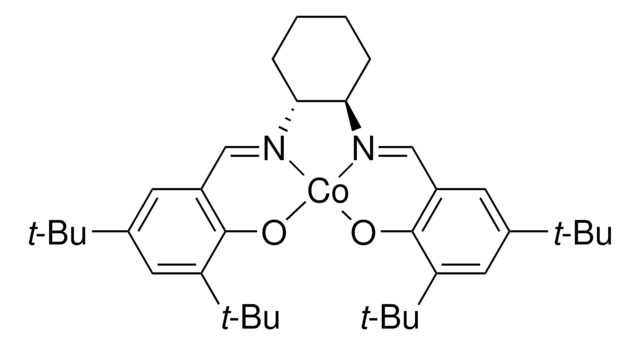520918
Chlorure d'or(III) trihydrate
≥99.9% trace metals basis
Synonyme(s) :
Acide tétrachloroaurique(III), Tétrachloroaurate(III) d'hydrogène
About This Item
Produits recommandés
Pureté
≥99.9% trace metals basis
Forme
crystals and lumps
Composition
Au, 48.5-50.25%
Conditionnement
glass bottle of 1 g
glass bottle of 25 g
glass bottle of 5 g
Impuretés
≤1000.0 ppm Trace Metal Analysis
Chaîne SMILES
Cl[H].[H]O[H].[H]O[H].[H]O[H].Cl[Au](Cl)Cl
InChI
1S/Au.4ClH.3H2O/h;4*1H;3*1H2/q+3;;;;;;;/p-3
Clé InChI
XYYVDQWGDNRQDA-UHFFFAOYSA-K
Vous recherchez des produits similaires ? Visite Guide de comparaison des produits
Description générale
Application
Mention d'avertissement
Danger
Mentions de danger
Conseils de prudence
Classification des risques
Acute Tox. 4 Oral - Aquatic Chronic 2 - Eye Dam. 1 - Met. Corr. 1 - Skin Corr. 1B - STOT RE 2 Oral
Organes cibles
Kidney
Code de la classe de stockage
8B - Non-combustible corrosive hazardous materials
Classe de danger pour l'eau (WGK)
WGK 3
Point d'éclair (°F)
Not applicable
Point d'éclair (°C)
Not applicable
Équipement de protection individuelle
Eyeshields, Faceshields, Gloves, type P3 (EN 143) respirator cartridges
Faites votre choix parmi les versions les plus récentes :
Déjà en possession de ce produit ?
Retrouvez la documentation relative aux produits que vous avez récemment achetés dans la Bibliothèque de documents.
Les clients ont également consulté
Articles
Solvothermal synthesis is a method for preparing a variety of materials such as metals, semiconductors, ceramics, and polymers.
Plasmonic nanoparticles have unique optical properties that can be tailored to suit a variety of applications in the biotechnology1–8 and electronics9–16 industries.
Plasmonic nanoparticles have unique optical properties that can be tailored to suit a variety of applications in the biotechnology1–8 and electronics9–16 industries.
Notre équipe de scientifiques dispose d'une expérience dans tous les secteurs de la recherche, notamment en sciences de la vie, science des matériaux, synthèse chimique, chromatographie, analyse et dans de nombreux autres domaines..
Contacter notre Service technique
















